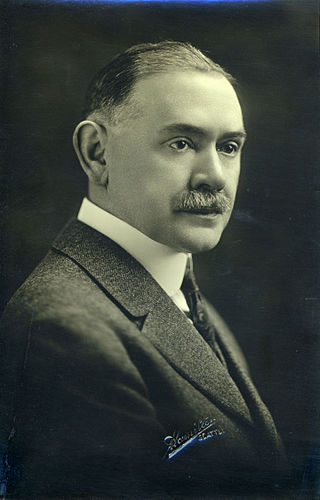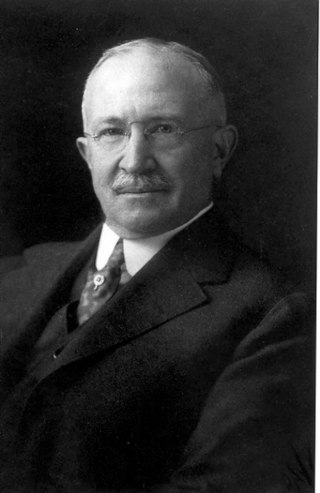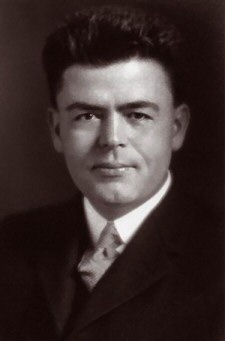
Ichthyology is the branch of zoology devoted to the study of fish, including bony fish (Osteichthyes), cartilaginous fish (Chondrichthyes), and jawless fish (Agnatha). According to FishBase, 33,400 species of fish had been described as of October 2016, with approximately 250 new species described each year.

John Nathan Cobb was an American author, naturalist, conservationist, canneryman, and educator. He attained a high position in academia without the benefit of a college education. In a career that began as a printer's aide for a newspaper, he worked as a stenographer and clerk, a newspaper reporter, a field agent for the U.S. Fish Commission (USFC) and its successor the U.S. Bureau of Fisheries, as an editor for a commercial fishing trade magazine of the Pacific Northwest, and as a supervisor for companies in the commercial fishing industry. He took photographs during his extensive travels documenting scenes and people. In 1919, Cobb was appointed the founding director of the College of Fisheries at the University of Washington (UW), the first such college established in the United States.
Henry Weed Fowler was an American zoologist born in Holmesburg, Pennsylvania.
Nigel Robert Merrett is a British zoologist and ichthyologist and former director of the fish section of the British Natural History Museum.

Tarleton Hoffman Bean was an American ichthyologist.
The American Society of Ichthyologists and Herpetologists (ASIH) is an international learned society devoted to the scientific studies of ichthyology and herpetology. The primary emphases of the society are to increase knowledge about these organisms, to communicate that knowledge through publications, conferences, and other methods, and to encourage and support young scientists who will make future advances in these fields. The programs of the American Society of Ichthyologists and Herpetologists are part of a global effort to interpret, understand, and conserve the Earth's natural diversity and to contribute to the wise use of natural resources for the long-term benefit of humankind.

Albert William Christian Theodore Herre was an American ichthyologist and lichenologist. Herre was born in 1868 in Toledo, Ohio. He was an alumnus of Stanford University, where he received a Bachelor of Science degree in botany in 1903. Herre also received a master's degree and a Ph.D. from Stanford, both in ichthyology. He died in Santa Cruz, California in 1962.

Charles Henry Gilbert was a pioneer ichthyologist and fishery biologist of particular significance to natural history of the western United States. He collected and studied fishes from Central America north to Alaska and described many new species. Later he became an expert on Pacific salmon and was a noted conservationist of the Pacific Northwest. He is considered by many as the intellectual founder of American fisheries biology. He was one of the 22 "pioneer professors" of Stanford University.

Seth Eugene Meek was an American ichthyologist at the Field Museum of Natural History in Chicago. He was the first compiler of a book on Mexican freshwater fishes. Together with his assistant, Samuel F. Hildebrand, he produced the first book on the freshwater fishes of Panama.

Carl Leavitt Hubbs was an American ichthyologist.

Theodore Wells Pietsch III is an American systematist and evolutionary biologist especially known for his studies of anglerfishes. Pietsch has described 72 species and 14 genera of fishes and published numerous scientific papers focusing on the relationships, evolutionary history, and functional morphology of teleosts, particularly deep-sea taxa. For this body of work, Pietsch was awarded the Robert H. Gibbs Jr. Memorial Award in Systematic Ichthyology by the American Society of Ichthyologists and Herpetologists in 2005. Pietsch has spent most of his career at the University of Washington in Seattle as a professor mentoring graduate students, teaching ichthyology to undergraduates, and curating the ichthyology collections of the UW Burke Museum of Natural History and Culture.

Robert Henry Gibbs Jr. (1929–1988) was an American ichthyologist. He was a long-standing curator at the National Museum of Natural History and devoted much of his career to the study of pelagic and deep-sea fishes. He was also an avid conservationist and a member of the American Society of Ichthyologists and Herpetologists for over 30 years.
The following outline is provided as an overview of and topical guide to fish:
Samuel Frederick Hildebrand was an American ichthyologist.
Clark Hubbs was an American ichthyologist who was professor of zoology at the University of Texas from 1963 until he accepted emeritus status in 1991. He was a leading figure in ichthyology in Texas, teaching many students who went on to be renowned in the field, was actively involved in many ichthyological societies and was an editor of scientific journals. Hubbs was also an environmental activist, fighting to conserve freshwater ecosystems.
John Richard Paxton is a United States-born Australian ichthyologist, who spent most of his career at the Australian Museum. He has a particular research interest in lanternfishes and other deep-sea fishes. Paxton is a founding member of the Australian Society for Fish Biology and received the society's K. Radway Allen Award in 1997.
Stanley Howard Weitzman was a Research Scientist Emeritus at Division of Fishes, National Museum of Natural History, Washington, D.C.
Marie-Louise Bauchot is a French ichthyologist and assistant manager of the National Museum of Natural History, France.
Daniel Morris Cohen was an American ichthyologist who was known for his studies on the taxonomy of salmonid, gadid, and ophidiform fishes.

James Wilder Orr is an American fisheries biologist, ichthyologist, and systematist best known for his studies of skates, rockfishes, snailfishes, and flatfishes. He has described 32 new species and two new genera of fishes, and is the author or co-author of more than 130 scientific and popular articles, including three books. His work has focused primarily on the phylogenetic relationships, zoogeography, reproductive biology, and behavior of marine teleosts, particularly deep-water benthic taxa. He has spent most of his career at the Alaska Fisheries Science Center, National Marine Fisheries Service (NMFS), in Seattle, as a Research Fisheries Biologist. At the same time, he has served as an Affiliate Professor at the School of Aquatic and Fishery Sciences, and Affiliate Curator of Fishes at the Burke Museum of Natural History and Culture, University of Washington, Seattle. For his lifetime of service, Orr was presented with a National Oceanic and Atmospheric Administration (NOAA) Distinguished Career Award in 2022.










